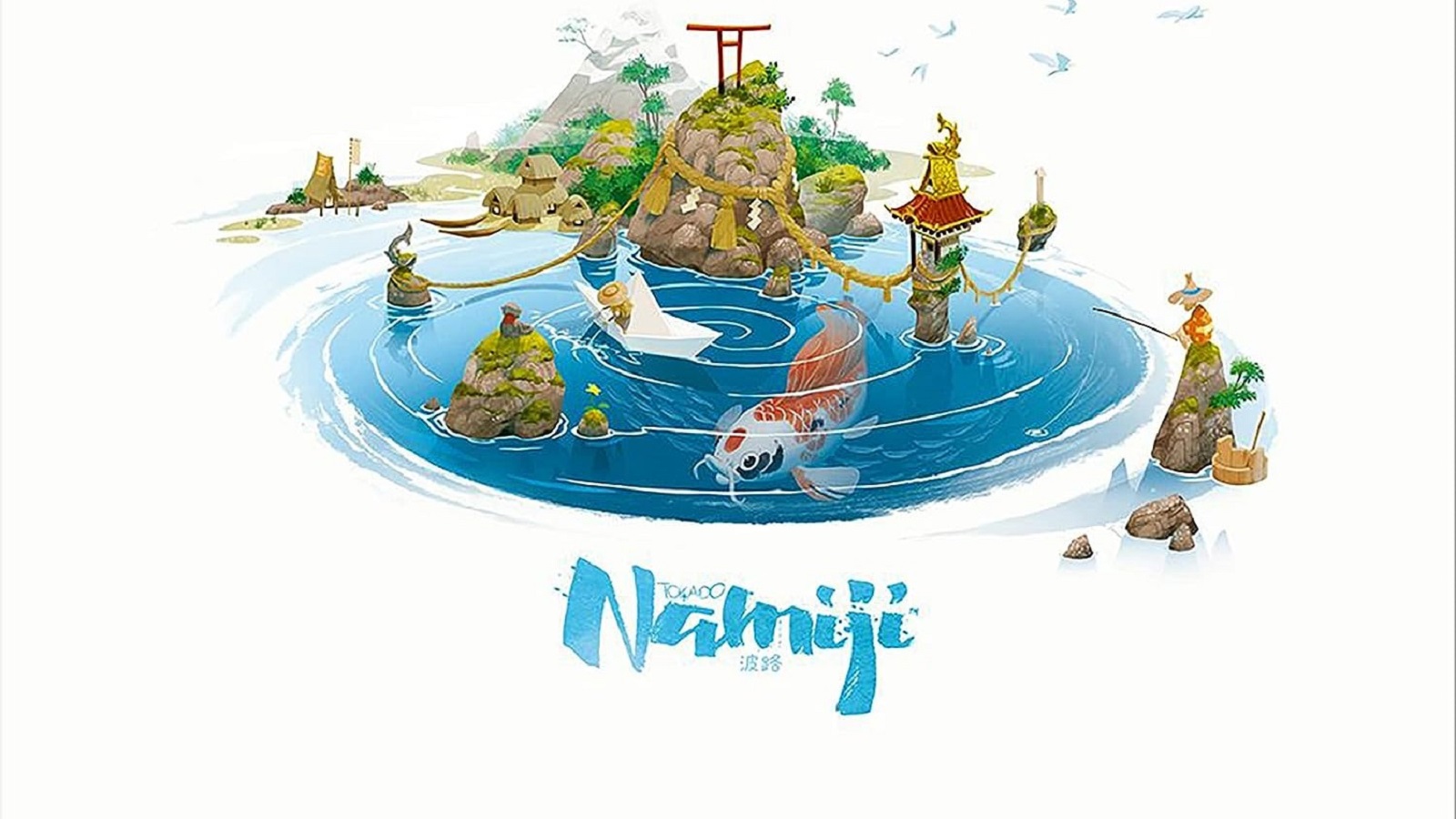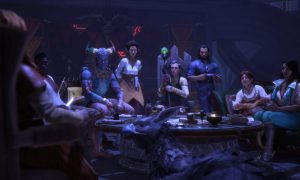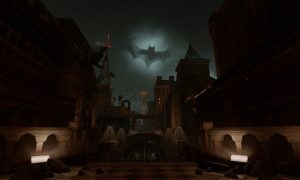Take to the sea
Board games grant players all kinds of feelings, from excitement as their armies clash together to fear and suspense as you sneak past your opponents. There is a great variety of board games, each with a different experience to offer. I’ve had many memorable moments from board games that got my heart pumping, but how does someone experience peace or serenity when playing board games? Few games try to capture this emotion as perhaps it isn’t as memorable, however I believe there is a place for this as eventually we all need a change of pace. Namiji might just be one of the closest ways to experience a sense of serenity while playing with a bit of cardboard.
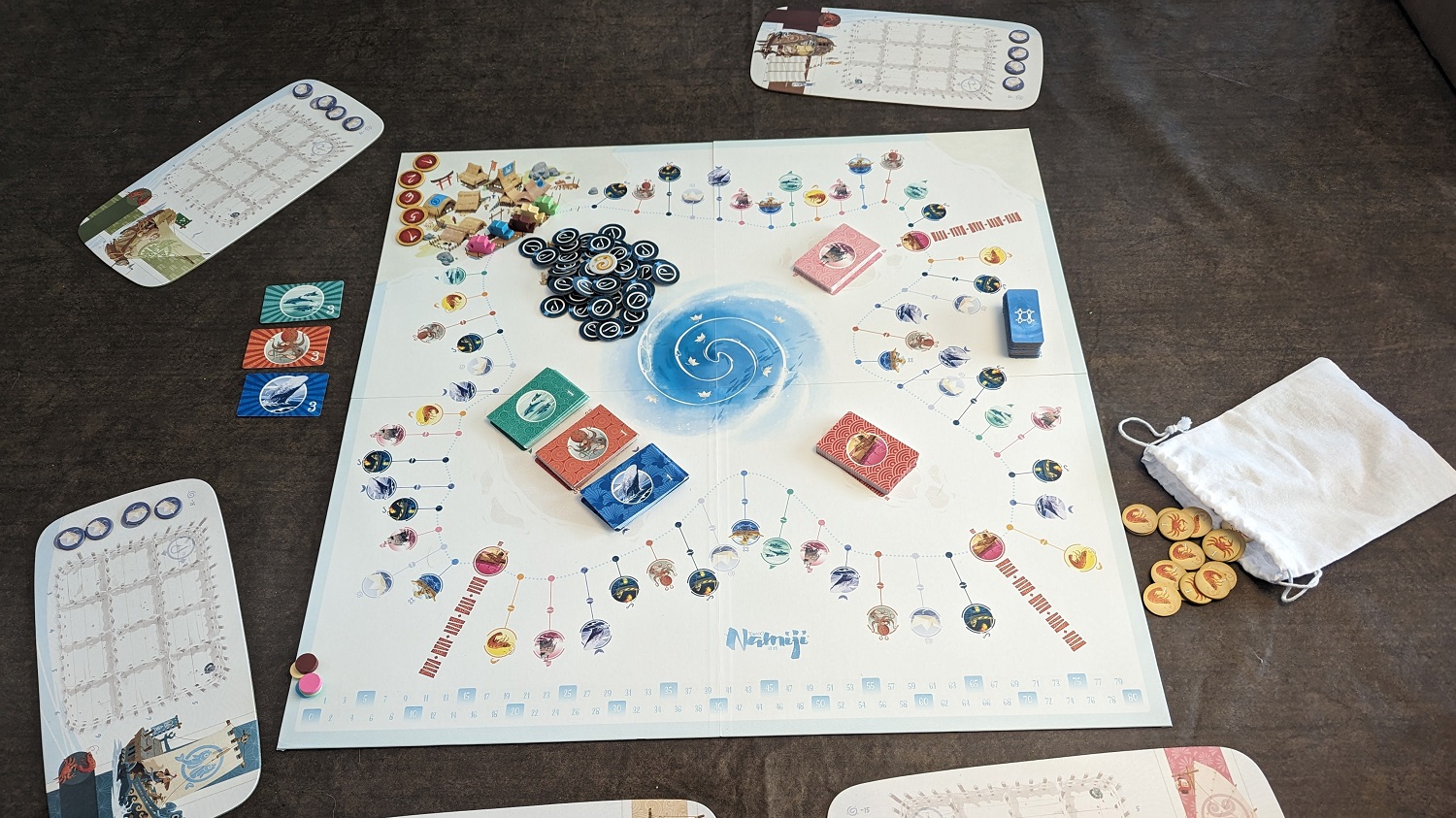
Namiji ready to play
The journey, not the destination
Namiji is a board game that plays 2-5 players, each taking on the role of an ancient Japanese angler. Every player will receive a board representing their fishing boat and will embark on a journey out to sea with the task of collecting the most points. While that sounds like a lot of games, the theme and presentation of Namiji helps reinforce the peaceful nature of Namiji. Reflected within Namiji is Japan’s respect for the natural world and their social harmony. There is no direct conflict found within the waters of Namiji.
Players will take turns moving their boat to a new spot along the line of potential destinations; whatever space the player moves to, they then activate that space. The unique rule within Namiji is that whoever is farthest back gets to move again. Namiji’s only conflict lies in someone else blocking a space you wanted to go as players can only ever move forward and players cannot occupy the same space. As with all trips, we only have so much time and we can’t visit everything. There can be situations where a player takes multiple turns in a row because they are still the farthest back along the line. This is the heart of the decision making for Namiji, what do you prioritize for your journey? Should I rush to the spots I want to visit so that I can’t be blocked or should I remain flexible, moving slowly and taking what is open? While being blocked feels bad, it’s difficult to be upset at someone for stopping and admiring nature simply because you wanted to do the same.
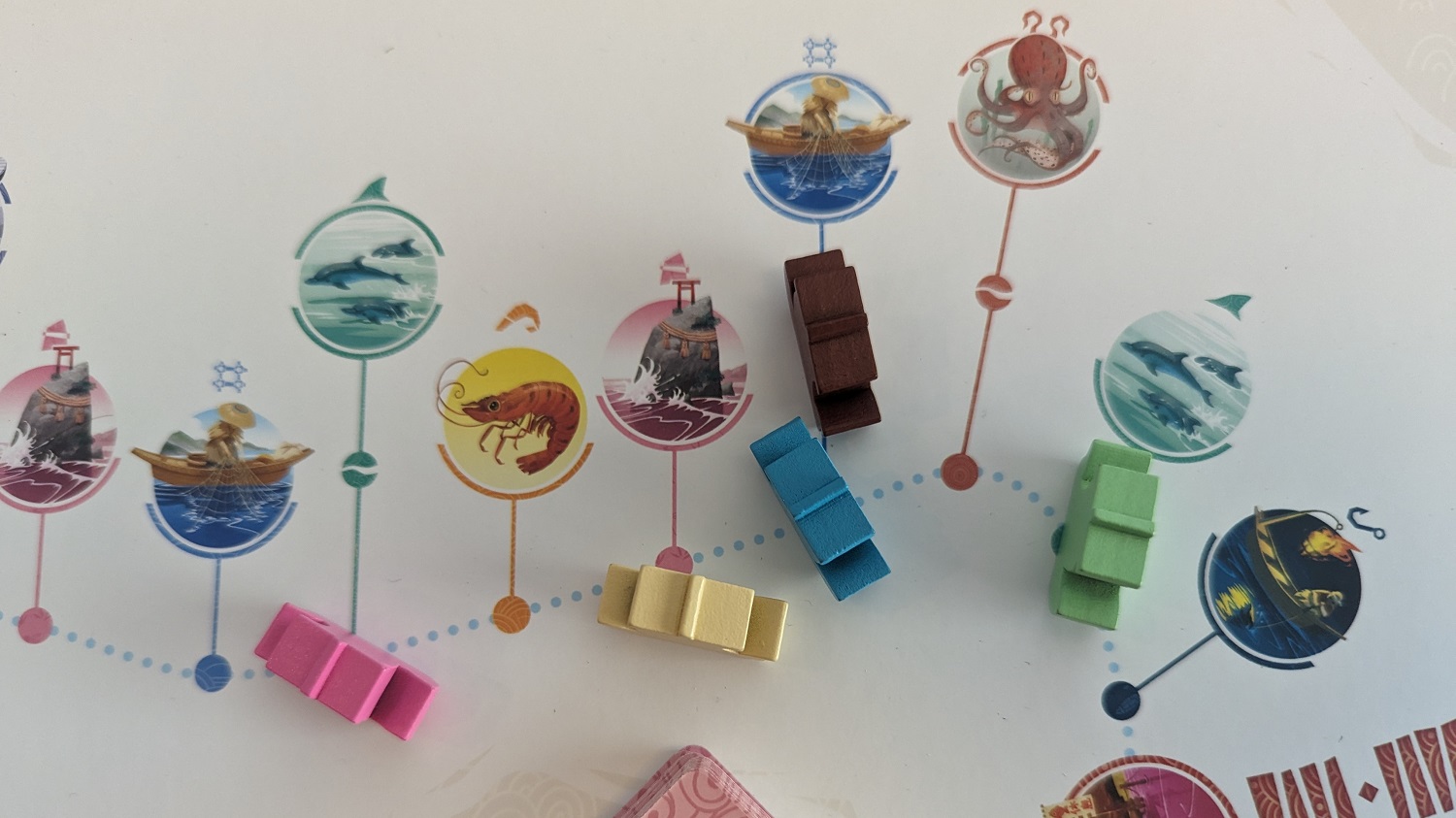
Fishing boats moving along their journey
So what are players actually doing along their journey? The spaces along each boat’s journey are referred to as stations, each with a minigame to consider. The “angling station” and the “net casting station” both focus on the players’ fishing boats. Within the boats are spaces that can store fish and if players make rows or columns of fish that are the same type or color they will score the points listed along their board. These two stations center around the fishing minigame that will have players doing their best to fill their boats with specific fish for as many points as possible. The “crustacean trap station” features a push-your-luck minigame where a player can keep pulling tokens out of a crustacean bag, but if they pull a second crab they lose their entire catch. (I think the crabs get pinchy.) Players begin with four offering tokens on their boat and if they don’t take the time to offer them back to the sea by visiting the “whirlpool station”, they will receive negative points at the end of Namiji. There are three different “panorama stations” where players will begin painting a panorama. Each panorama is a different chain of points with a bonus for being the first to complete a panorama. “Sacred rock stations” offer a player a choice of one of two secret objectives that could score them extra points at the end of the game.
Lastly, the “dock station” is a space where players must stop. This breaks up the board into different segments of a larger journey. Here players are offered a choice about what order they want to leave in for the next leg of the journey along with options for scoring points or special powers. Eventually players will complete the four legs of the journey before returning home, and the player with the most points will win.
Turning the tide
With the options laid out for your journey, how do the pieces come together? The “stations” offer minigames that players will have to balance in order to score well. Players can’t focus on everything and your choices change from turn to turn, forcing players to adapt. There is a fair amount of randomness in Namiji. Fishing can yield tokens that aren’t helpful and players can immediately pull two crabs out of the crustacean traps, making them score nothing. (You can stop at the one crab token, but who does that?) The sacred rocks and docks can also have choices that might not be useful to a particular game plan. Even if that happens players can change their strategies mid game, but it’s possible to end up with choices that simply don’t help you as much as what the other players are finding.
The randomness being a downside, Namiji is easy to teach and quick to play. Namiji makes a great choice for families or players wanting something light. Turns in Namiji are quick as there aren’t too many variables in play at any one moment. This helps Namiji keep its total playtime shorter too so Namiji never feels too long. The clean aesthetic to the artwork also reinforces the lightweight nature of Namiji and contributes to the overall feel of the game.
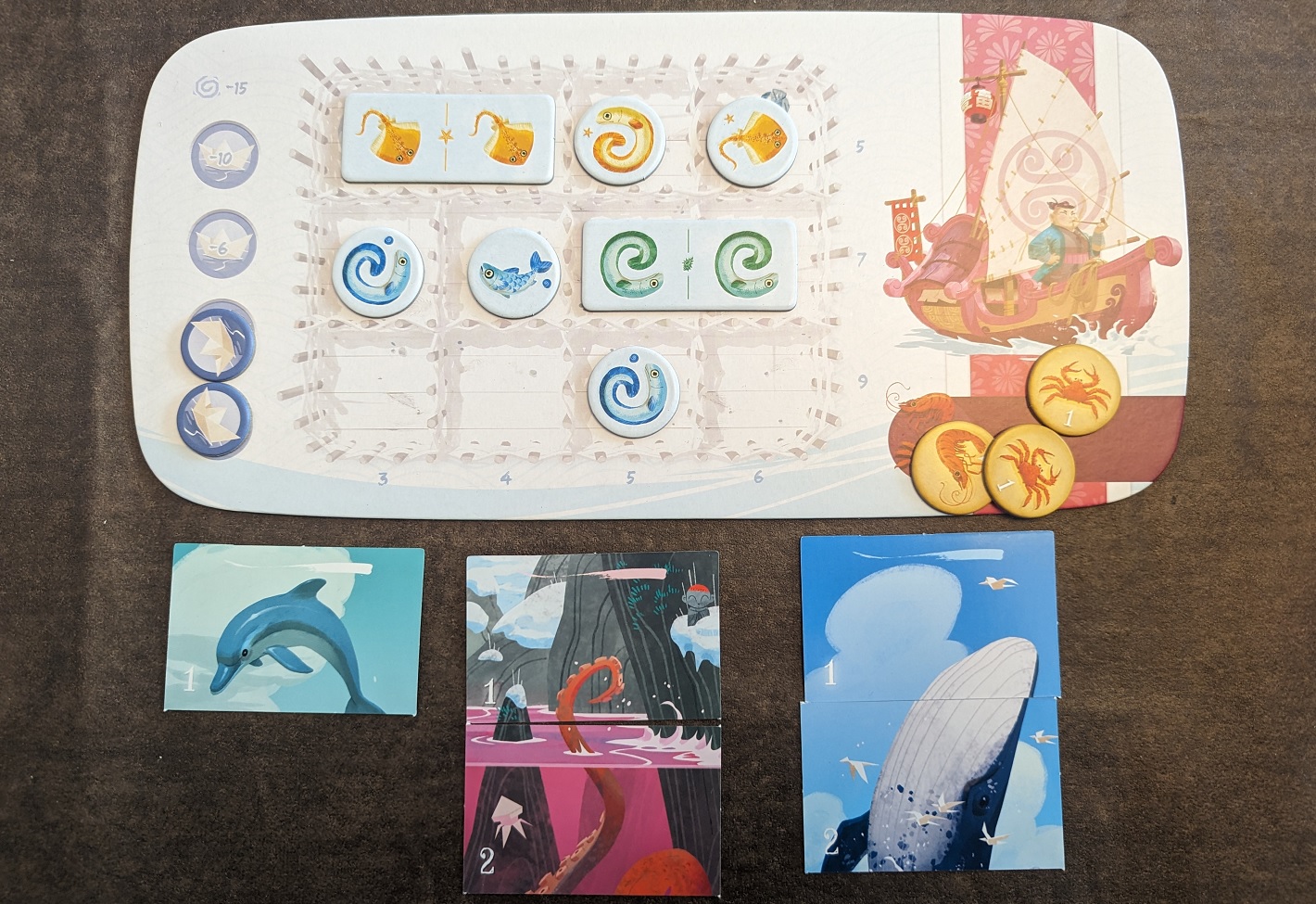
A player board near the end of the game
Spiritual Successor
Namiji is the second game in a line following Tokaido released in 2012. Namiji’s central movement mechanism is a direct copy of Tokaido, but Namiji changes up the options with the stations available. Namiji updates a few rules as well, such as when players arrive at docks players can choose which space they want rather than it simply being the order they arrive in. While the panorama stations are the same as Tokaido, the rest of the stations in Namiji are new. The two games feel very similar and because of that they play nearly identically. Overall the rule changes Namiji does implement makes Namiji feel like a more streamlined update, but Tokaido is also a wonderful choice for those looking for something light. If you’re looking for more depth, Tokaido currently has two expansions while Namiji currently has one expansion.
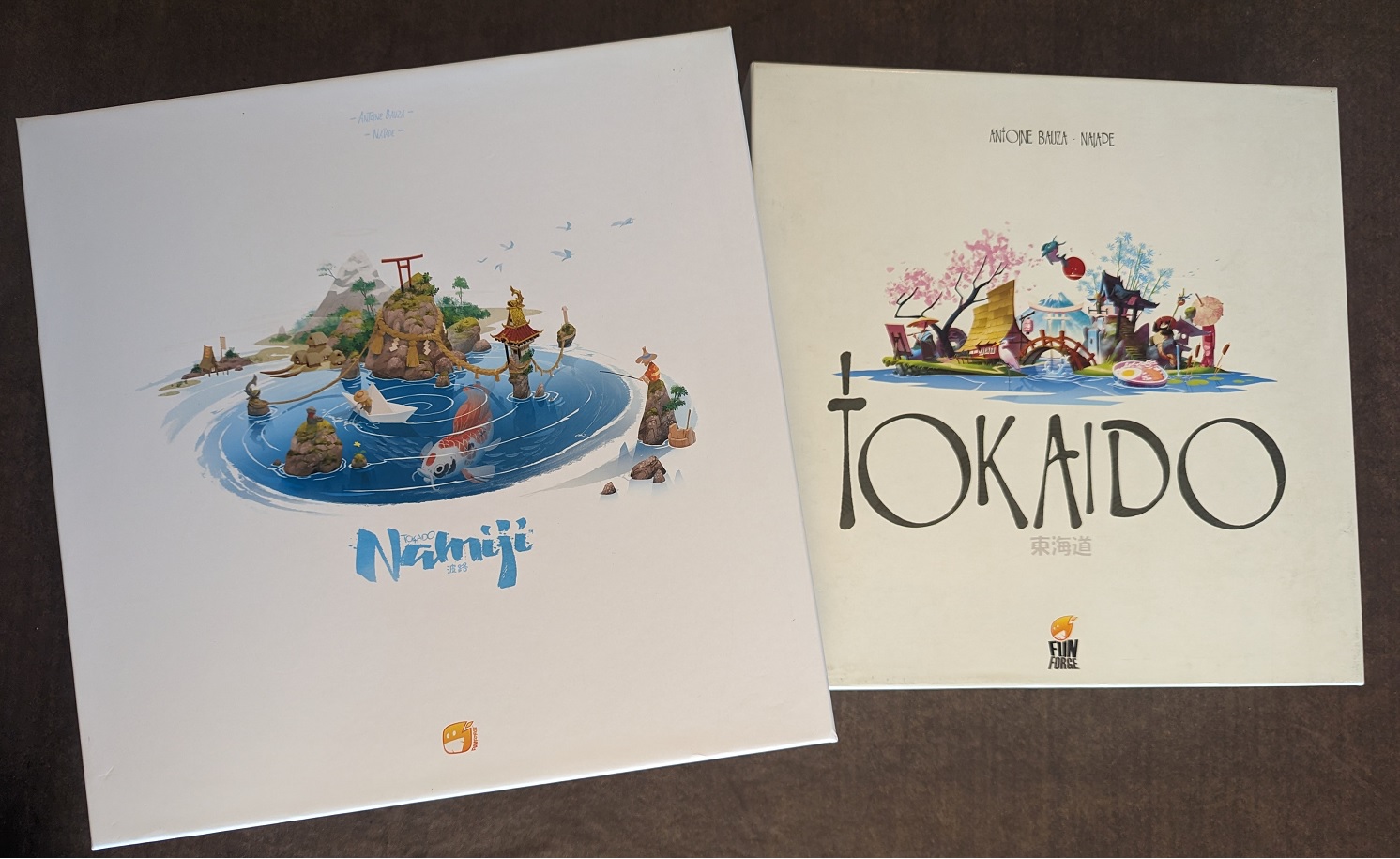
Namiji and Tokaido together
Home at Last
Namiji is a fun lightweight board game that is great for players looking for something easy to play. I can especially recommend Namiji for anyone new to hobby board games. Whether it’s starting a game day with something lighter or if you simply need something with a sense of tranquility, Namiji will fit that bill.
Chris began tabletop gaming in college and quickly fell into the addictive world of cardboard. Beginning with D&D and Catan he became an enthusiast of all things gaming; analog or digital. Chris, now a relapsed MtG player, loves connecting with people via gaming through RPGs, board games, and video games. A particular favorite is testing friendships through social deduction games.

Namiji is a fun lightweight board game that is great for players looking for something easy to play. I can especially recommend Namiji for anyone new to hobby board games. Whether it's starting a game day with something lighter or if you simply need something with a sense of tranquility, Namiji will fit that bill.
PROS
- Namiji is easy to teach and play
- Fantastic gateway game
- Namiji’s peaceful nature is felt throughout
CONS
- Randomness can be frustrating
- 2 player game isn’t as interactive as other player counts
See below for our list of partners and affiliates:
